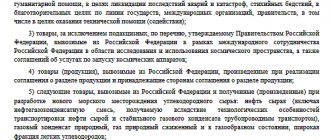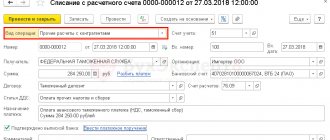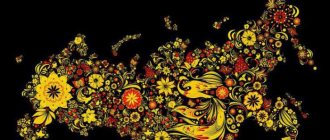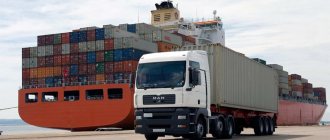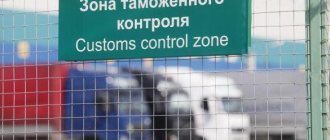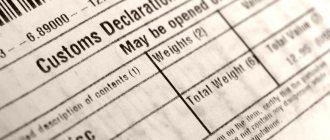For several centuries now, world economic powers have been actively using customs preferences and benefits in regulating foreign trade. Initially, the concepts of “customs preference” and “customs benefit” had similar meanings. However, as a result of the development of foreign trade policy, a separation of these two concepts occurred.
The establishment of special rules and advantages over other trade participants began to be called a benefit. In modern encyclopedic dictionaries, “benefit” is understood as the provision of any advantages, partial or complete exemption from the implementation of established rules and duties.
Customs benefits appear as favorable exceptions from the generally applicable customs regime, which is considered to be the most favored nation regime.
In turn, Most Favored Nation treatment (MFN) is a fundamental international legal regime, according to which goods and services of one country, when imported into the customs territory of another country, must enjoy the same benefits , privileges, advantages and other benefits as goods, services originating from any third country.In other words, most favored nation treatment in intercountry trade and economic relations is the principle of non-discrimination.
Customs benefits can be provided in the form of exemption from customs duties and fees (tariff benefits), the use of a simplified procedure for passing goods and personal belongings across the customs border, or the complete non-application of such procedures, granting the right to import into or export from the country any items, the movement of which across the border is generally prohibited. According to their legal nature, customs benefits are divided into conventional, based on an international treaty, and unilateral, established by the state unilaterally.
Tariff benefits are a type of customs benefits applied in the form of a refund of previously paid duties, exemption from duty payments, reduction of duty rates, and the establishment of tariff quotas for preferential import (export) of goods.
Tariff preferences are especially preferential (or preferential) import duties established by the state, both for individual and for all goods of a particular country, which do not apply to goods from other countries.
Thus, preferential duty rates are duty rates lower than the base rates applied to countries using the MFN regime.
The official purpose of preferences is to promote exports and production development in countries that use such customs preferences.
What is included in the concept of tariff privileges
The essence of the tariff benefit is disclosed in the Law “On Customs Tariffs”. It is a privilege granted internationally to a second party regarding a product being transported across a border. This is a type of preferential taxation that reduces the customs duty rate.
ATTENTION! The concepts of customs benefit and tariff benefit should not be confused, since the first is broader and includes the second along with other forms of privileges.
Important features of the tariff benefit:
- Reflected in the customs law of the country or in an interstate agreement. A treaty rule has greater force according to the principle of supremacy of international law.
- It is established as a unilateral measure or as a mutual concession to a partner.
- It is in the nature of political influence on the range of imported and exported goods.
- Applies to all free trade participants. If a member of the Customs Union (CU) intends to introduce such privileges for goods imported by some members, it must propose to the Eurasian Economic Commission (EEC) an algorithm for regulating their use. Only approved preferences are valid.
Now the Eurasian Economic Commission acts in trade relations between the Russian Federation, the CIS states and other parties to the agreement, monitoring the implementation of CU decisions regarding customs duty rates and existing privileges.
On the unified system of tariff preferences of the Customs Union
The Protocol on the Unified System of Tariff Preferences of the Customs Union, which entered into force on January 1, 2010, establishes the procedure for the formation and approval by the Commission of the Customs Union of lists of goods and countries - users of the system of tariff preferences of the Customs Union.
By the Decision of the Interstate Council of the Eurasian Economic Community (the supreme body of the Customs Union) dated November 27, 2009 No. 18 and the Decision of the Customs Union Commission dated November 27, 2009 No. 130, the following lists were approved with a period of entry into force of January 1, 2010:
— List of developing countries - users of the system of tariff preferences of the Customs Union,
LIST OF DEVELOPING COUNTRIES - USERS OF THE SYSTEM OF TARIFF PREFERENCES OF THE CUSTOMS UNION
| No. | List of developing countries - beneficiaries |
| 1. | Albania |
| 2. | Algeria |
| 3. | Anguilla |
| 4. | Antigua and Barbuda |
| 5. | Argentina |
| 6. | Aruba |
| 7. | Bahamas |
| 8. | Barbados |
| 9. | Bahrain |
| 10. | Belize |
| 11. | Bermuda |
| 12. | Bolivia |
| 13. | Bosnia and Herzegovina |
| 14. | Botswana |
| 15. | Brazil |
| 16. | British Virgin Islands |
| 17. | Brunei |
| 18. | Venezuela |
| 19. | Vietnam |
| 20. | Gabon |
| 21. | Guyana |
| 22. | Ghana |
| 23. | Guatemala |
| 24. | Honduras |
| 25. | Hong Kong Special Administrative Region of China |
| 26. | Grenada |
| 27. | Dominica |
| 28. | Dominican Republic |
| 29. | Egypt |
| 30. | Zimbabwe |
| 31. | India |
| 32. | Indonesia |
| 33. | Jordan |
| 34. | Republic of Iraq |
| 35. | Iran |
| 36. | Republic of Cape Verde |
| 37. | Cayman islands |
| 38. | Cameroon |
| 39. | Qatar |
| 40. | Kenya |
| 41. | China |
| 42. | Democratic People's Republic of Korea |
| 43. | Colombia |
| 44. | Congo |
| 45. | The Republic of Korea |
| 46. | Costa Rica |
| 47. | Ivory Coast |
| 48. | Cuba |
| 49. | Kuwait |
| 50. | Cook Islands |
| 51. | Lebanon |
| 52. | Libya |
| 53. | Mauritius |
| 54. | Macedonia |
| 55. | Malaysia |
| 56. | Morocco |
| 57. | Republic of the Marshall Islands |
| 58. | Mexico |
| 59. | Federated States of Micronesia |
| 60. | Mongolia |
| 61. | Montserrat |
| 62. | Namibia |
| 63. | Republic of Nauru |
| 64. | Nigeria |
| 65. | Netherlands Antilles |
| 66. | Nicaragua |
| 67. | Niue |
| 68. | United Arab Emirates |
| 69. | Sultanate of Oman |
| 70. | St. Helena Islands |
| 71. | Turks and Caicos Islands |
| 72. | Pakistan |
| 73. | Panama |
| 74. | Independent State of Papua New Guinea |
| 75. | Paraguay |
| 76. | Peru |
| 77. | Salvador |
| 78. | Saudi Arabia |
| 79. | Swaziland |
| 80. | Republic of Seychelles |
| 81. | Saint Vincent and the Grenadines |
| 82. | Saint Kitts and Nevis |
| 83. | Saint Lucia |
| 84. | Republic of Serbia |
| 85. | Singapore |
| 86. | Syria |
| 87. | Suriname |
| 88. | Thailand |
| 89. | Tokelau |
| 90. | Kingdom of Tonga |
| 91. | Trinidad and Tobago |
| 92. | Tunisia |
| 93. | Türkiye |
| 94. | Uruguay |
| 95. | Sovereign Democratic Republic of Fiji |
| 96. | Philippines |
| 97. | Croatia |
| 98. | Republic of Montenegro |
| 99. | Chile |
| 100. | Democratic Socialist Republic of Sri Lanka |
| 101. | Ecuador |
| 102. | South Africa |
| 103. | Jamaica |
— List of goods originating and imported from developing and least developed countries, the import of which is provided with tariff preferences.
LIST OF GOODS ORIGINATING AND IMPORTED FROM DEVELOPING AND LEAST DEVELOPED COUNTRIES, FOR WHICH IMPORTATION IS PROVIDED TARIFF PREFERENCES
| CU FEACN code | Name of product * |
| 02 | Meat and edible meat by-products |
| 03 (except 0305) | Fish and crustaceans, mollusks and other aquatic invertebrates (except sturgeon and salmon, as well as caviar from them) |
| 04 | Milk products; bird eggs; natural honey; edible products of animal origin, not elsewhere specified or included |
| 05 | Animal products not elsewhere specified or included |
| 06 | Living trees and other plants; bulbs, roots and other similar parts of plants; cut flowers and decorative foliage |
| 07 | Vegetables and some edible roots and tubers |
| 08 | Edible fruits and nuts; citrus fruit peel or melon rind |
| 09 | Coffee, tea, mate, or Paraguayan tea, and spices |
| 1006 | Rice |
| 11 | Products of the flour and cereal industry; malt; starches; inulin; wheat gluten |
| 12 | Oilseeds and fruits; other seeds, fruits and grains; medicinal plants and plants for technical purposes; straw and fodder |
| 13 | Natural shellac, unrefined; gums, resins and other plant juices and extracts |
| 14 | Plant materials for making wickerwork; other products of vegetable origin, not elsewhere specified or included |
| 15 (except 1509, 1517 – 1522 00) | Fats and oils of animal or vegetable origin and their breakdown products; prepared edible fats; waxes of animal or vegetable origin |
| 16 | Prepared products of meat, fish or crustaceans, molluscs or other aquatic invertebrates |
| 1801 00 000 0 | Cocoa beans, whole or crushed, raw or roasted |
| 1802 00 000 0 | Husks, shells, skins and other cocoa waste |
| 20 (except 2001 10,000 0, 2009 50, 2009 71, 2009 79) | Processed products of vegetables, fruits, nuts or other plant parts |
| 2103 | Products for making sauces and ready-made sauces; mixed flavorings and seasonings; mustard powder and ready-made mustard |
| 2104 | Ready-made soups and broths and preparations for their preparation; homogenized compound prepared food products |
| 2401 | Raw tobacco; tobacco waste |
| 25 (except 2501 00 91, 2529 21 000 0, 2529 22 000 0) | Salt; sulfur; earth and stone; plastering materials, lime and cement |
| 26 | Ores, slag and ash |
| 3003 | Medicines (other than goods of heading 3002, 3005 or 3006), consisting of a mixture of two or more components, for therapeutic or prophylactic purposes, but not put up in dosage forms or in forms or packages for retail sale |
| 32 | Tanning or dyeing extracts; tannins and their derivatives; dyes, pigments and other coloring substances; paints and varnishes; putties and other mastics; printing paint, ink, ink |
| 3301, 3302 | Essential oils...; resinoids...; mixtures of aromatic substances... |
| 3402 | Organic surfactants (except soap); surfactants, detergents (including detergent auxiliaries) and cleaning preparations, whether or not containing soap (other than those of heading 34.01) |
| 35 | Protein substances; modified starches; adhesives; enzymes |
| 3923 | Products for transporting or packaging goods, made of plastics; stoppers, lids, caps and other closures, made of plastic |
| 4001 | Natural rubber, balata, gutta-percha, guayule, chicle and similar natural resins, in primary forms or in the form of plates, sheets or strips or strips |
| 4403 41 000 0, 4403 49 | Other unprocessed timber, from tropical wood |
| 4407 21 – 4407 29 | Timber, sawn or split lengthwise..., from tropical wood |
| 4420 | Wooden mosaic and inlaid products; boxes and boxes for jewelry or cutlery and similar products, wooden; figurines and other decorative items, wooden; wooden furniture not included in Chapter 94 |
| 4421 | Other wooden products |
| 45 | Cork and products made from it |
| 46 | Products made of straw, alfa and other materials for weaving; basketry and wickerwork |
| 50 | Silk |
| 5101 | Wool not carded or combed |
| 5201 00 | Cotton fiber, not carded or combed |
| 53 | Other vegetable textile fibers; paper yarn and fabrics made from paper yarn |
| 56 | Cotton wool, felt or felt and non-woven materials; special yarn; twine, ropes, ropes and cables and products made from them |
| 5701 | Knotted carpets and other textile floor coverings, whether or not finished |
| 5702 10 000 0 | Carpets "kilim", "sumac", "kermani" and similar handmade carpets |
| 5705 00 100 0 | Carpets and other textile floor coverings, whether or not made, of wool or fine animal hair** |
| 5808 | Braid woven in a piece; finishing materials without embroidery in a piece, except for machine-knitted or hand-knitted materials; tassels, pompoms and similar articles |
| 6702 90 000 0 | Artificial flowers, leaves and fruits and their parts; products made of artificial flowers, leaves or fruits, or other materials |
| 68 | Articles made of stone, plaster, cement, asbestos, mica or similar materials |
| 6913 | Figurines and other decorative items made of ceramics |
| 6914 | Other ceramic products |
| 7018 10 | Glass beads, imitation pearls, precious or semi-precious stones and similar small glass forms |
| 7117 | Bijouterie |
| 9401 51 000 0, 9401 59 000 0 | Seating furniture made of cane, willow, bamboo or similar materials |
| 9403 81 000 0, 9403 89 000 0 | Furniture made from other materials, including cane, willow, bamboo or similar materials |
| 9403 90 900 0 | Furniture parts made of other materials |
| 9601 | Processed and suitable for carving ivory, bone, tortoiseshell, horn, antlers, coral, mother-of-pearl, other materials of animal origin and products made from these materials (including products obtained by molding) |
| 9602 00 000 0 | Processed materials of plant or mineral origin, suitable for carving, and products made from them; molded or carved articles of wax, stearin, natural resins or natural rubber or modeling pastes, and other molded or carved articles not elsewhere specified or included; processed gelatin, unhardened (other than gelatin of heading 3503) and products made from unhardened gelatin |
| 9603 | Brooms, brushes (including brushes that are parts of machinery, instruments or vehicles), hand-held mechanical brushes without motors for cleaning floors, mops and feather dusters; knots and bundles prepared for the manufacture of brooms or brush products; paint pads and rollers; rubber squeegees (except rubber rollers for removing moisture) |
| 9604 00 000 0 | Manual sieves and sieves |
| 9606 | Buttons, snaps, snap fasteners, button molds and other parts of these products; button blanks |
| 9609 | Pencils (other than those of heading 96.08), colored pencils, pencil leads, pastels, charcoal pencils, writing or drawing chalks and tailor's chalks |
| 9614 00 | Smoking pipes (including bowl-shaped parts), cigar or cigarette holders, and parts thereof |
| 9615 11 000 0 | Combs, hair combs and the like, hardwood or plastic |
| 9617 00 | Thermoses and other vacuum vessels, assembled; parts thereof, except glass flasks |
| 97 | Artworks, collectibles and antiques |
* In this list, goods are determined solely by the product code according to the Commodity Nomenclature of Foreign Economic Activity; The product name is provided for ease of use only.
** Tariff preferences are provided only for handmade carpets.
The lists generally correspond to Russian preferential lists in order to minimize negative reactions from third countries, as well as facilitate negotiations on the accession of member states of the customs union to the World Trade Organization.
The amount of tariff preferences within the Customs Union is established by Article 7 of the Agreement on Unified Customs Tariff Regulation, which entered into force on January 1, 2010. Thus, in relation to goods originating from developing countries that are users of the unified system of tariff preferences of the Customs Union and imported into the unified customs territory of the states of the Parties included in the list of preferential goods, import customs duty rates are applied in the amount of 75% of the import customs duty rates of the Unified Customs Tariff. In respect of goods originating from the least developed countries that are users of the single system of tariff preferences of the Customs Union and imported into the common customs territory of the states of the Parties included in the list of preferential goods, zero rates of import customs duties are applied.
Types of privileges
Current types of tariff benefits are listed in the customs legislation of the Russian Federation:
- Refund of previously paid duty at the time of removal of the object.
- Exemption from collection of fees.
- Rate reduction.
- Tariff quotas.
This list is not exhaustive. In special cases, other types of preferences may be established:
- A deferment or installment plan, which is a form of tax credit. Provided with the condition of return and additional payment of interest at rates. The decision to provide a service is made by the administrative entity that issues the goods.
- The purpose of simplified taxation through the appointment of uniform rates of customs duties and the abolition of duties for persons transporting objects not intended for commercial purposes. For example, no tax is charged for the transportation of a personal car, technical supplies, currency, securities, humanitarian aid, and so on.
ADVICE! You can view an exhaustive list of tax-free objects in Art. 35 of the Law “On Customs Tariffs”.
Russia provides privileges for objects of trade with participants of the Customs Union and beneficiaries of the Russian Federation in accordance with the agreement of the member states of the customs union.

